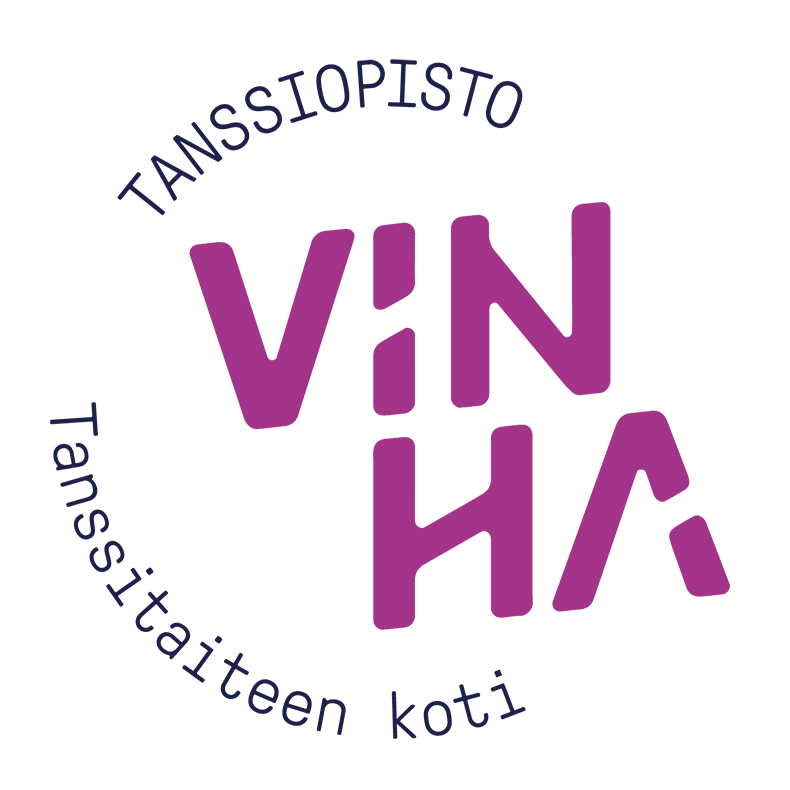Non-black dancer in Black culture
Sure, when in the middle of pandemic’s European outburst and following the news of the death of George Floyd under the knee of a police officer, I participated in the worldwide indignation… I did post a black square on my social media, followed the Black Live Matters protests (1) and learned a great deal about allyship on Instagram as the visual-base platform was erupting with political content (2).
Never having experienced racism myself, I followed and amplified voices of victims and activists. It felt right… And a bit wrong, too. Was I just following trend or was I genuinely involved in the matter? It wasn’t until I read one post from the account @freedomovement.co (3) that I realized how tangible and personal the issue was. The post in question was entitled “As a non-black dancer in black culture here are some questions to ask yourself”
Before getting in its details, you could be wondering what exactly is black culture? Or, as I was, why is the culture name called Black? This is hard to discuss openly about, especially for us European.
In France for instance where I come from, we build our democracy on the concept of Universalism which means equity for all regardless of who we are. Alas at the same time it was being built, this vision omitted our colonial activity. Yet colonial activity was made possible by taking rights away from people based on their culture and physical appearance. As a result, we are now poorly equipped, words and therefore in action, to properly fight racism and even to understand the resistance that is Black Culture.
Black culture itself refers to the rich cultural production and heritage of people of the African diaspora and their descendants. Usually it is use as a synonym for African-American culture, but maybe it could embrace the worldwide diaspora. Raising it as a label for musical, tv and all kind of production was and remains a way to uplift the diaspora which continuously suffer from lack of representation (4).
So here I was scrolling through the questions of the post addressed to non-black dancers and Bam! I was struck by the 6th question!
“Where am I imitating black people instead of being myself?”
What would they mean by imitating, I thought. Do they refer to the learning process in which while following a teacher, we learn by imitation? If Hip Hop at its origin come from black dancers, than what choice do I have but to imitate them if I want to dance the style?
Following that train of thought, I reflected on my dance path.
When I was a teenager and learning Old School Hip Hop as well as Locking and Popping with my teacher Ange El Fonky Juice, a French Hip Hop OG (among the early generation) coming from Ivory Coast, I didn’t gave much thought to where did the movements came from or what was my teacher history. I instantly connected to his energy, the music, the challenge of move accordingly to the beat, in complex motion. I was in complete imitation!
Later on I join in the crew Hype’N’Spicy led by the same person. I was still learning, imitating, but also part of the creative process. While we created shows, we had to agree on why we were dancing and what we wanted to express. Slowly I started to discover my own voice and sensitivity. I couldn’t imitate anymore. I needed to find my way of expressing myself with dance in order to find my place in a group. Even if at that time it meant eventually quitting a group I loved.
Then I discovered Waacking, an evolution of Punking, a dance-fight against the stigma of homophobia. Like a sponge I was absorbing all of what I could find but this time not only by imitating but also by learning more about the music, about the inspirations. In that path I was finding myself much faster than with previous dance experience. Hip Hop, Waacking and later on Voguing, the path continues. No one replacing the other but all of them informing me of who am I and how can I express it.
On the path to discover ourselves, sometimes we imitate and that is alright as long as we’re able to eventually move beyond. In Dance we receive a lot from imitating our masters and the best way to give back is to use what we have been given to express ourselves and take part in the discussion!
Hip Hop is a part of who I am. But after representing the style to a great extent, I needed to start again. Just like a tiny seed that was part of a large tree, is now just sprouting again.
Written by Jérémy, 16 September 2020
(1) See about the Black Lives Matters repercussion in Finland here.
(2) See about Instagram role in the dissemination of political content here
(3) The instagram post here.
(4) For fine example of Black Culture, check this article.
This is a great platform to get more information and education on African American History and Culture
Ei-mustana tanssijana mustassa kulttuurissa
Keskellä pandemian puhkeamista Euroopassa seurasin uutisia George Floydin kuolemasta poliisin polven alla, ja osallistuin – toki – maailmanlaajuiseen suuttumukseen… Lisäsin mustan neliön sosiaaliseen mediaani, seurasin Black Live Matters -protesteja (1) ja opin paljon liittolaisuudesta Instagramissa, kun visuaalisuuteen perustuva alusta pursui poliittista sisältöä (2).
Koska en ole koskaan kokenut itse rasismia, seurasin ja vahvistin uhrien ja aktivistien ääniä. Se tuntui oikealta… Ja myös hieman väärältä. Seurasinko vain trendiä vai olinko aidosti mukana asiassa? Vasta kun luin erään viestin tililtä @freedomovement.co (3), tajusin miten konkreettinen ja henkilökohtainen asia oli. Kyseisen viestin otsikko oli ”Ei-mustana tanssijana mustassa kulttuurissa; tässä on joitain kysymyksiä, jotka voit kysyä itseltäsi ”
Ennen kuin mennään viestin yksityiskohtiin, saatat miettiä, mitä on musta kulttuuri? Tai, kuten minä mietin, miksi kulttuurin nimeä kutsutaan mustaksi? Tästä on vaikea keskustella avoimesti, etenkin meidän eurooppalaisten.
Esimerkiksi Ranskassa, josta olen kotoisin, rakennamme demokratiamme universalismin käsitteelle, joka tarkoittaa tasapuolisuutta kaikille riippumatta siitä, keitä olemme. Valitettavasti samaan aikaan kun sitä rakennettiin, tämä visio jätti siirtomaissa toimimisen pois. Siirtomaissa toimiminen oli kuitenkin mahdollista ottamalla pois oikeudet ihmisiltä heidän kulttuurinsa ja fyysisen ulkonäkönsä perusteella. Tämän seurauksena olemme nyt huonosti varustettuja, sanoin ja siten myös teoin, jotta voisimme taistella asianmukaisesti rasismia vastaan ja jopa ymmärtää vastustusta, jota on musta kulttuuri.
Musta kulttuuri itsessään viittaa afrikkalaisen diasporan ja jälkeläisten rikkaaseen kulttuurituotantoon ja perintöön. Yleensä sitä käytetään synonyyminä afroamerikkalaiselle kulttuurille, mutta ehkä se voisi sisältää maailmanlaajuisen diasporan. Nostamalla se leimaksi musiikille, televisioon ja kaikenlaiseen tuotantoon oli ja on edelleen tapa lisätä diasporaa, joka jatkuvasti kärsii edustuksen puutteesta (4).
Selasin ei-mustille tanssijoille suunnattua kirjoitusta ja Pam! Minuun osui kuudes kysymys!
”Miksi jäljittelen mustia ihmisiä sen sijaan, että olisin itseni?”
Mitä he tarkoittavat jäljittelemisellä, ajattelin. Viittaavatko ne oppimisprosessiin, jossa opettajaa seuraamalla opimme jäljittelemällä? Jos Hip Hop on lähtöisin mustilta tanssijoilta, mitä vaihtoehtoja minulla on kuin jäljitellä heitä, jos haluan tanssia kyseistä lajia?
Tämän ajatuksen jälkeen pohdin tanssipolkuani.
Kun olin teini-ikäinen ja opiskelin Old School Hip Hopia sekä Lockingia ja Poppingia opettajani Ange El Fonky Juicen, ranskalaisen Hip Hopin OG:n (varhaisen sukupolven joukossa) Norsunluurannikolta, kanssa, en paljoakaan miettinyt, mistä liikkeet tulivat tai mikä oli opettajani historia. Yhdistyin heti hänen energiaansa, musiikkiinsa, liikkumisen haasteeseen musiikin tahtiin, monimutkaiseen liikkeeseen. Jäljittelin täysin!
Myöhemmin liityin saman henkilön johtamaan Hype’N’Spicy-crew’hun. Opin edelleen, jäljittelin, mutta olin myös osa luovaa prosessia. Luodessamme esityksiä meidän täytyi sopia miksi tanssimme ja mitä halusimme ilmaista. Hitaasti aloin löytää oman ääneni ja herkkyyteni. En voinut enää jäljitellä. Minun oli löydettävä tapa ilmaista itseäni tanssilla löytääkseni paikkani ryhmässä. Vaikka se tarkoitti tuolloin myös rakastamassani ryhmässä lopettamista.
Sitten löysin Waackingin, Punkingin evoluution, tanssitaistelun homofobian leimaa vastaan. Kuin sieni, imin itseeni kaiken, mitä löysin, mutta tällä kertaa paitsi matkimalla, myös oppimalla lisää musiikista, inspiraatioista. Sillä polulla löysin itseni paljon nopeammin kuin aikaisemmalla tanssikokemuksella. Hip Hop, Waacking ja myöhemmin Voguing, polku jatkuu. Yksi ei korvaa toista, mutta kaikki ne kertovat minulle kuka olen ja miten voin sen ilmaista.
Toisinaan itsemme löytämisen polulla jäljittelemme kunnes pystymme lopulta siirtymään pidemmälle. Tanssissa saamme paljon jäljittelemällä mestareitamme ja paras tapa antaa takaisin on käyttää sitä, mitä meille on annettu ilmaistaksemme itseämme ja osallistuaksemme keskusteluun!
Hip Hop on osa minua. Mutta kun olin edustanut tyyliä suurissa määrin, minun piti aloittaa uudelleen. Aivan kuten pieni siemen, joka oli osa suurta puuta, vasta itämässä uudelleen.
Kirjoittanut Jérémy, syyskuun 16. päivä 2020
Käännös: Sara Riihiaho
(1) Katso Black Lives Matter -vaikutuksista Suomessa täältä.
(2) Katso Instagramin roolista poliittisen sisällön levittämisessä täältä.
(3) Instagram-postaus täällä.
(4) Hieno esimerkki mustasta kulttuurista on tässä artikkelissa.
Tämä on loistava foorumi saada lisää tietoa ja koulutusta afroamerikkalaisesta historiasta ja kulttuurista

